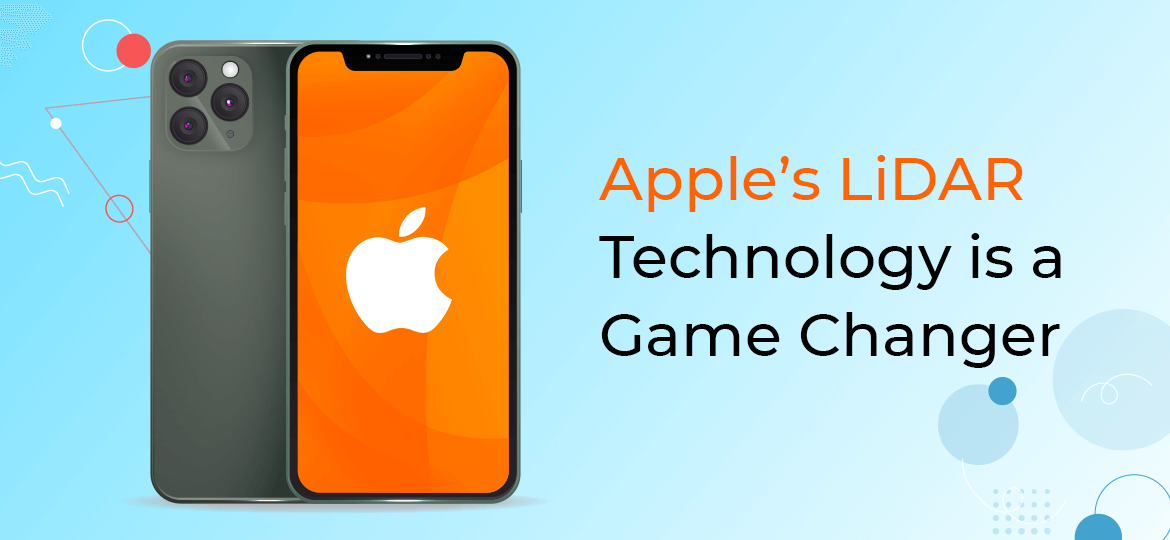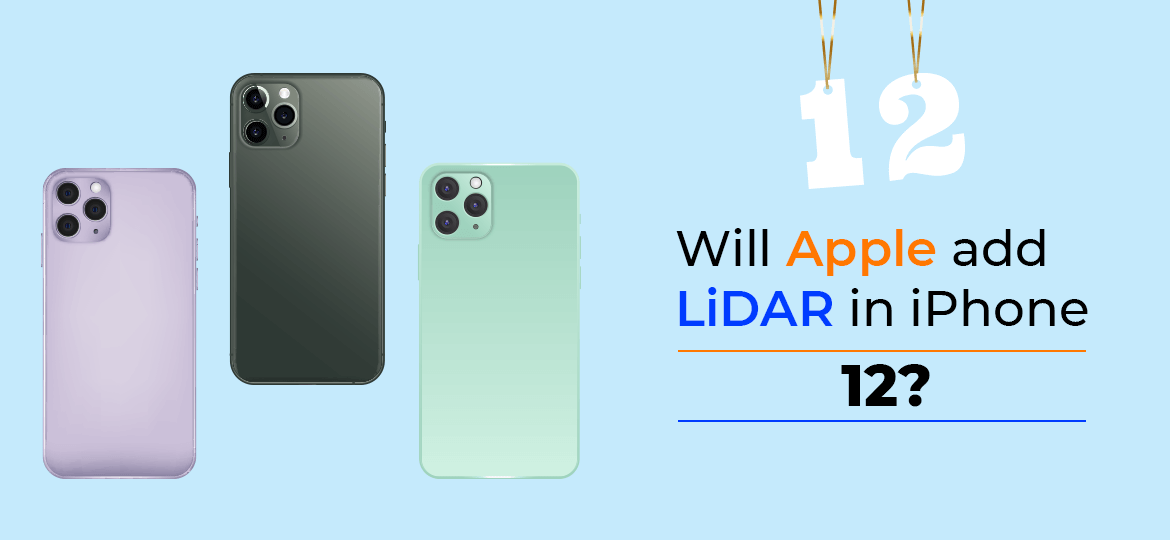
Apple’s newly announced iPad Pro on 18th March 2020. Apple’s LiDAR Technology has all set for the new AR revolution. The breakthrough LiDAR Scanner for 2020 iPad Pro model is first in the mobile industry that has patented nine years ago. Here the scanner LiDAR compares Face ID of Apple devices. The LiDAR scanner place on the rear camera of the iPad Pro gives a better understanding of the location.
LiDAR stands for ‘Light Detection and Ranging’. It’s a well-known technology in the geospatial industry. It works as a revolutionary tool for scanning and surveying. LiDAR builds 3D surrounding maps and detects the near-by objects. It allows users to see objects they are into.
What is LiDAR?
The new LiDAR Apple’s technology can measure the distance to surrounding objects with 5 meters away. It works both indoors and outdoors at the speed of nanosecond. One of the biggest advantages of using the LiDAR scanner is that it should fit in smaller. It provides complete access to confined areas. Besides, it can fit in large-scale scans to have a precise survey.
Apple’s LiDAR Technology aims to develop cutting-edge mapping points. It merged with camera and motion sensor data. It helps in creating more detailed and 3D data of the scene to give instant object placement. Later, LiDAR combined with Apple’s dual depth cameras and computer vision algorithms. It used to have a powerful scanning platform in the future.
Difference between Sonar, Radar and LiDAR
LiDAR, Sonar, and Radar all reveal information about the object’s shape, size, height, and direction. All three-use different types of signals. Sonar (short for sound navigation and ranging) relies on sound waves to detect objects underwater. Radar (short for radio detection and ranging) which determines objectives at a distance. While LiDAR collects high-density data to produce maps. It has a sensor found in self-driving cars.
Uses of LiDAR
- LiDAR has fitted under drones which create high readings of transmission lines, terrain, trees, and buildings.
- It maps accurately from the ground beneath with producing a highly accurate 3D model when compared with terrestrial sampling methods.
- It uses technology that uses ground-based surveys.
- LiDAR uses a sensor that provides continuous 360 degrees of visibility with accurate depth information.
- It was first used by spacecraft during the Apollo 15 mission in 1971 when astronauts mapped the surface of the moon.
Will Apple add LiDAR on iPhone 12?

As of now, iPad Pro comes with a LiDAR sensor as introduced by Apple. The technology will use for the iPhone 12 and is scheduled for the launch later this year. The latest report says that Apple is working on new AR app technology named as ‘Gobi’ which will allow the user to preview items before purchase made. We can call LiDAR with iPad Pro as the beginning of something big.
LiDAR in iPad Pro
Previously, LiDAR used in Galaxy Note 10+, Galaxy S20 Ultra, and Huawei Mate 30 Pro. The Custom LiDAR scanner is more advanced than the ToF system used by Apple. It can measure 16 feet away distance while ToF would only detect a maximum of the two-meter range. Apple claims that LiDAR technology can benefit the Augmented Reality application. LiDAR operates at the photon level at nano-second speeds. The AR technology overlays the data and virtual objects on real-world scenes in real-time.
The use of AR on the iPad was pushed by Apple and iPhone for quite some time now. The store is offering AR apps that target the student community. One can hire iOS app developer India or any country to create future applications using the LiDAR sensor on the iPad Pro. LiDAR sensor will help in improving photography on the iPad Pro. Apple has used A12Z Bionic chip to help iPad Pro work faster than most Windows PC laptops.
How A12Z Bionic Chips works?
A12Z built for most demanding tasks that help in editing more than 4K video or in designing 3D models. With this A12Z feature, iPad Pro gets another performance booster. It comes with eight-core GPU to enhance the thermal architecture and tuned performance controllers to give the highest performing iPad.
Later it combined with eight-core CPU to enable next-generation apps. No other chips have such incredible performance as we have found in this thin and light designed iPad Pro. Moreover, it has excellent Wi-Fi connectivity, 10 hours long battery life, and 60% faster gigabit-class LTE bands.
ARKIT is a toolkit for developers that help in creating powerful AR applications. Apple developed the ARKit framework to devote big chunks to its annual Worldwide Developer Conference. Apple has added a new product category and kept in front of iOS developers to help them stave off a potential chicken-and-egg problem. iOS Application development India to develop quality applications that match your needs. Use the iOS Apple’s LiDAR technology to enhance your next outdoor adventure.
But why the technology is used on iPad Pro only?
Troughton-Smith says Apple wanted to give developers a chance to build an experience that eventually shows off whatever the next iPhone will introduce. Generally, the iPad feels like an old place where the supplier isn’t ready to meet the iPhone demand yet. Therefore, this can allow the developer to develop something new.
Sooner or later, Apple will bring tracked support to iPad with iPadOS 13.4 by giving the user new ways to interact. Instead of coping macOS will support trackpad to reimagined iPad completely. Here, when the user will move their figure across the trackpad, the pointer will highlight user interface elements. This gesture will help the user to move faster and easier to navigate the complete system without even lifting the hand.
What’s the Future?
The studies showed by LiDAR experts and app developers that LiDAR scanner makes Apple’s iPad useful for 3D space sensing. LiDAR scanner best suits for the indoor environment. LiDAR scanner has set future integration in iOS devices. Presently, the app is used for scanning and creating maps for a confined environment. It can use in creating an augmented reality environment in real-time. Let’s wait and watch what time will tell.




 Indonesia
Indonesia
 Botswana
Botswana
 USA
USA
 Italy
Italy
 Panama
Panama




 USA
USA UK
UK Saudi Arabia
Saudi Arabia Norway
Norway India
India Australia
Australia